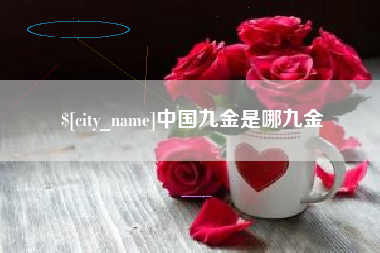河北中国九金是哪九金
导读:中国的“九金”并非指具体的黄金种类或数量,而是一种具有象征意义的文化概念。这个概念源于古代的相生相克理论,并与九九归一的哲学思想相呼应,象征着富贵、吉祥与完满。了解“九金”的真正来历,是深入了解中国传统文化的重要部分。九金的...
中国的“九金”并非指具体的黄金种类或数量,而是一种具有象征意义的文化概念。这个概念源于古代的相生相克理论,并与九九归一的哲学思想相呼应,象征着富贵、吉祥与完满。了解“九金”的真正来历,是深入了解中国传统文化的重要部分。
九金的象征意义
在中国文化中,九被视为最大的数字,象征着至尊和至阳之气。九金因此而被赋予了无比的尊贵与财富的象征意义,寓意着拥有再多的钱也不会被俗事所累,同时也寓意着幸福美满。

九金的起源
九金的观念最早可以追溯到周代的青铜器铸造和《易经》中的八卦演绎。在《易经》中,乾卦占据西北方,这个方位被认为是天权之主,代表尊贵的皇帝和至高无上的权力,乾卦的卦数为九,因此九这个数字就被赋予了无穷大的力量和尊贵的意义。再者,九的倍数在一些古代祭祀仪式中也有出现,象征着其威严无上的地位。
用“九”的相关讲究与技巧
- 婚嫁礼仪:古代皇家的婚礼总是被称为“册封九经”,意味着整个婚礼过程要遵循九个步骤,每一个环节都与“九”这个字有关。在现今的婚嫁仪式中,我们也可以看到买金饰时加上“五金”或“三金”的称呼,但究其来源,还是在继承“九金”的尊贵概念。
- 建筑布局:古代的皇宫院落、寺庙及高级官员的府邸,常常被设计为正方形或圆形,中间设九层平台或九个对称的建筑元素,如九州环海。这种设计实质上是利用了“九”的尊贵寓意。
- 节日庆祝:在一些重大的传统节日里,如春节、中秋、重阳等,人们会预备九九重阳糕、糖丸等食品作为庆祝的传统方式。这些习俗不仅注意到了数字的应用,更体现了对传统文化的传承和尊重。
通过了解“九金”的来历及其背后的文化意义,我们不仅能够更全面地认知中国文化,还能更加智慧地运用这些传统的智慧和技巧来提升自身文化素养和生活品质。访问https://172.lot-ml.com/ProductEn/index/228624771753f69b ,您可以参与免费领卡活动,了解更多与“九金”相关的文化传承和收藏艺术!